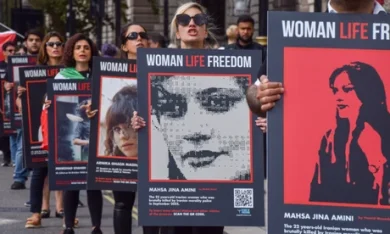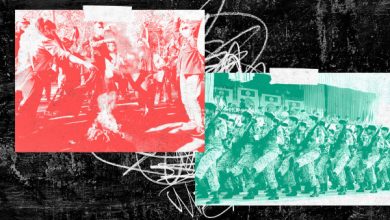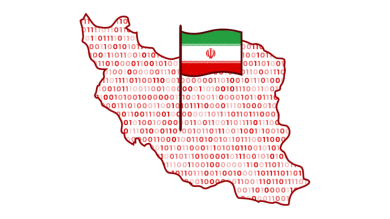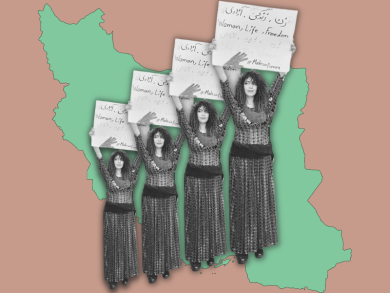For decades, Iranian women have endured systemic oppression—from enforced dress codes and gender-based legal discrimination to restrictions on their movement, voice, and visibility in public life. Despite this, or perhaps because of it, women have risen to become the backbone of Iran’s fight for freedom. Their leadership is not symbolic; it is fundamental, sustained, and transformative.
From the grassroots to the global stage, Iranian women are not only resisting the regime’s oppression but reshaping the narrative of what freedom means in Iran.
1. Historical Foundations: Decades of Quiet Resistance
Since the 1979 Islamic Revolution, Iranian women have been forced into a rigid system of gender apartheid, starting with the imposition of the mandatory hijab and exclusion from public roles. But the resistance also began immediately. Whether through underground education movements, civil disobedience, or intellectual critique, women built a foundation for what has now erupted into full-blown revolution.
Women have long fought for:
• The right to education and employment.
• Freedom from mandatory dress codes.
• Equal representation in law and society.
These decades of endurance and defiance are not incidental—they are the roots of today’s movement.
2. The Spark: Mahsa Amini and the “Women, Life, Freedom” Movement
The 2022 death of Mahsa Amini at the hands of Iran’s “morality police” was not just a tragic injustice—it was a spark that ignited a generational uprising.
Women tore off their hijabs, cut their hair, and marched in the streets. They chanted “Women, Life, Freedom,” a slogan that originated from Kurdish feminist resistance, and made it the beating heart of Iran’s modern freedom movement.
In this wave of unrest:
• Women led demonstrations in Tehran, Kurdistan, and Balochistan.
• Female students organized walkouts and sit-ins.
• Mothers of slain protesters became public advocates for justice.
3. Why Women Are the Backbone
A. Oppression is Gendered—So is the Resistance
Iran’s repression is acutely gendered. Women face:
• Legal inequality in marriage, divorce, custody, and inheritance.
• Criminalization of personal choices like clothing and behavior.
• Systematic exclusion from leadership roles.
As a result, women have the greatest stakes in dismantling the system—and thus the greatest motivation to lead resistance.
B. Women Bridge the Divide Between Public and Private Resistance
The state seeks to control both public expression and private life, especially for women. Yet Iranian women resist in both spheres:
• In public: through protest, art, journalism, and civil activism.
• In private: by raising politically conscious children, educating others, and fostering dissent in the home.
This dual role makes them the connective tissue of the resistance—bridging generations and spaces.
C. Intersectional Leadership
Iranian women are not a monolith. Resistance has been especially powerful where women have embraced intersectionality, acknowledging that:
• Kurdish, Baloch, and Arab women face ethnic as well as gender oppression.
• LGBTQ+ women face dual discrimination.
• Economic marginalization impacts working-class women differently.
This inclusive approach has strengthened the legitimacy and reach of the movement.
4. Leading Through Action: Icons of Resistance
Iran’s women are not just symbols—they are active leaders:
• Narges Mohammadi: Nobel Peace Prize winner and prisoner of conscience, writing from behind bars about prison abuse and women’s rights.
• Masih Alinejad: Exiled journalist whose online campaigns have empowered thousands of women to resist forced hijab laws.
• Nasrin Sotoudeh: Human rights lawyer imprisoned for defending women activists.
• Sepideh Gholian: Labor rights activist repeatedly imprisoned for speaking out against injustice.
These women—and thousands more unnamed—are not waiting for permission to lead. They are already doing it.
5. Women’s Resistance is Revolutionary
What makes Iran’s current movement revolutionary is that it challenges the ideological foundation of the regime: control of women’s bodies and voices. Unlike past protests focused on economic grievances or electoral fraud, this movement targets the systemic misogyny at the heart of the Islamic Republic.
This is not a reform movement. It’s a revolution.
By demanding bodily autonomy, political equality, and cultural freedom, women are demanding a new Iran.
6. The Role of the Iranian Diaspora
Iranian women in the diaspora have played a powerful role in:
• Amplifying voices from within Iran.
• Organizing international protests.
• Advocating for sanctions on IRGC leaders.
• Building bridges between exiled activists and those still in Iran.
Their visibility on global platforms has helped keep international attention focused and built pressure on foreign governments to respond.
7. How the World Can Help
Amplify, Don’t Appropriate
Non-Iranians must listen to Iranian women, not speak for them. Elevate their voices, don’t drown them out.
Support Digital Resistance
Help provide:
• Secure VPNs and encrypted messaging apps.
• Tools for bypassing censorship.
• Cybersecurity training for activists.
Demand Political Action
Call on governments to:
• Sanction the IRGC and its leadership.
• Grant asylum to persecuted activists.
• Hold Iran accountable in international human rights forums.
Conclusion: Iran’s Future is Female
Iranian women are not asking for freedom—they are claiming it. They are organizing, educating, resisting, and leading. They are the backbone not just of a protest, but of a historic transformation.
They are not the future of a free Iran—they are its present.
As the regime attempts to suppress this movement with brutality and fear, the world must remember: oppression can crush bodies, but not voices.
And the voices of Iranian women are echoing across the world—louder than ever.
Join Our Newsletter!
Stay informed with the latest updates, news, and ways to take action in the fight for justice and global security. Sign up now to get updates delivered straight to your inbox!





